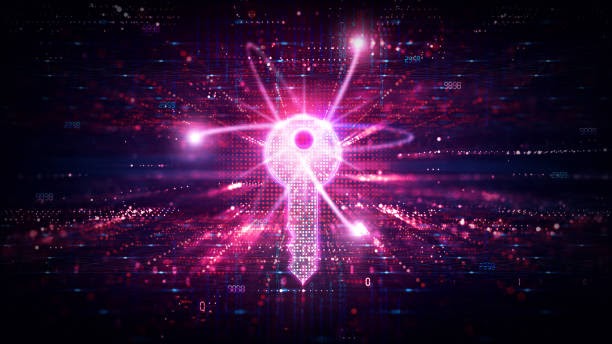Quantum cryptography is emerging as a cornerstone in the
fight against sophisticated cyber threats. As quantum computing continues to
evolve, its ability to disrupt traditional encryption methods has turned the
spotlight on quantum-safe and quantum-secure solutions. This article explores
how quantum cryptography is reshaping cybersecurity in 2024, its key
challenges, and its potential to safeguard the digital future.
The Quantum Threat to Cybersecurity
Quantum computers leverage the principles of quantum
mechanics to process data at speeds unimaginable by classical computers. This
capability threatens traditional encryption methods, such as RSA and ECC, which
rely on the difficulty of factoring large numbers or solving discrete
logarithms—problems that quantum algorithms like Shor’s could solve
efficiently.
Experts estimate that within 5 to 10 years, quantum
computers might mature enough to render classical cryptographic systems
vulnerable. This looming “cryptopocalypse” necessitates urgent action
to protect sensitive data stored today, which could be harvested and decrypted
later when quantum capabilities become mainstream
What is Quantum Cryptography?
Quantum cryptography uses the properties of quantum
mechanics to secure information. Unlike traditional cryptography, which relies
on mathematical complexity, quantum cryptography exploits phenomena like
quantum superposition and entanglement.
Quantum Key Distribution (QKD)
QKD is one of the most promising applications of quantum
cryptography. It enables two parties to share encryption keys securely. The
fundamental principle behind QKD is that any attempt to eavesdrop on the
quantum channel will disturb the quantum state of the particles (photons) being
transmitted, alerting the legitimate parties to the intrusion
In 2024, advancements such as QKD-on-a-chip and
satellite-based QKD are making this technology more scalable and
cost-effective, overcoming previous limitations like range and integration
challenges. These innovations are driving the adoption of QKD in sectors like
finance, healthcare, and government for secure communication.
Post-Quantum Cryptography (PQC)
While quantum cryptography is “quantum-secure,”
post-quantum cryptography offers “quantum-resistant” solutions. PQC
involves algorithms designed to resist decryption by quantum computers while
remaining compatible with existing digital infrastructures.
In 2024, the U.S. National Institute of Standards and
Technology (NIST) is finalizing standards for PQC algorithms, such as KYBER,
DILITHIUM, and SPHINCS+. These algorithms are undergoing rigorous testing to
ensure they meet security, efficiency, and scalability criteria. Governments
and industries worldwide are preparing to implement these standards to
transition their systems to quantum-resilient encryption
Benefits of Quantum Cryptography
- Unbreakable
Security: QKD provides theoretically unbreakable security, as it
leverages the laws of physics rather than computational complexity. - Future-Proof
Encryption: Quantum-resistant and quantum-secure solutions are
critical for safeguarding data against the harvest-now-decrypt-later
threat. - Scalable
Solutions: With advancements in hardware, including quantum chips and
satellite communications, quantum cryptography is becoming more accessible
and practical. - Sector-Wide
Applications: From banking to national security, quantum cryptography
is addressing diverse cybersecurity needs, including protecting critical
infrastructure and financial transactions
Challenges and Limitations
Technical and Cost Barriers
Quantum cryptography systems, particularly QKD, require
specialized hardware like photon detectors and dark fiber networks. The high
cost and technical complexity of these systems have historically limited their
widespread adoption
Integration and Transition
Integrating quantum cryptography into existing systems and
transitioning from classical cryptographic protocols to post-quantum standards
pose significant challenges. This requires substantial investment in
infrastructure and workforce training.
Ongoing Threats
Even as quantum cryptography evolves, it faces competition
from emerging technologies like in-memory computing, which could potentially
decrypt data at speeds comparable to quantum computers. Additionally, no system
is entirely immune to vulnerabilities, highlighting the importance of
continuous innovation in cryptographic solutions
The Path Forward: Collaboration and Innovation
Global collaboration is essential for the successful
adoption of quantum cryptography. Governments, academic institutions, and
private enterprises are investing in research and development to accelerate the
deployment of quantum-secure systems. Initiatives like NIST’s PQC
standardization and advances in QKD technology are laying the groundwork for a
quantum-safe digital ecosystem
Furthermore, partnerships between tech companies, such as
those in telecommunications and cybersecurity, are driving innovation. These
collaborations aim to address scalability, cost, and interoperability
challenges, ensuring that quantum cryptography solutions are accessible to a
wide range of industries
Resources for Further Exploration
To dive deeper into the role of quantum cryptography and its
advancements in 2024, consider the following resources:
- NIST
Post-Quantum Cryptography Project: Learn more about NIST’s efforts to standardize PQC
algorithms. - World
Economic Forum on Quantum Security: Explore insights on quantum cryptography’s global impact. - Capgemini
Cybersecurity Reports: Detailed analysis of post-quantum cryptography challenges. - SecurityWeek
Articles on Quantum Computing: Insights into emerging quantum threats and solutions.
By staying informed and adopting quantum-safe measures, we
can navigate the quantum era with confidence and resilience.








